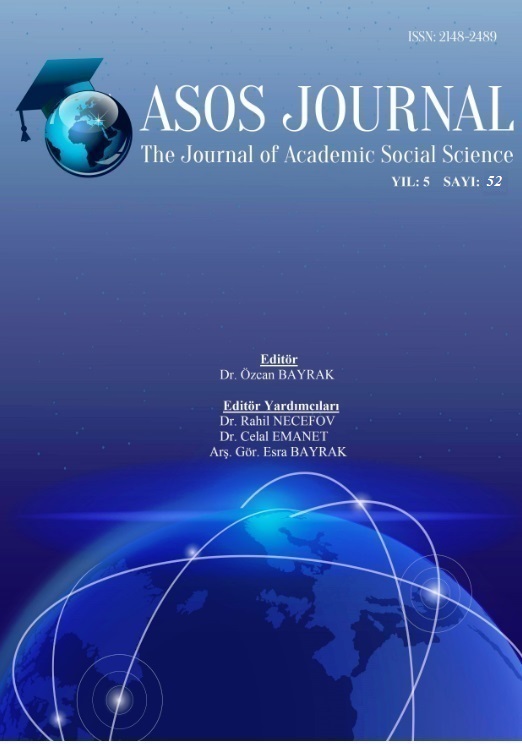Author :
Abstract
Bu çalışmada ortaokul öğrencilerinin okul yaşam kalitesi algılarını cinsiyet, sınıf düzeyi, anne- baba eğitim düzeyi ve kendini akademik olarak algılama gibi çeşitli değişkenler açısından incelemek amaçlanmıştır. Çalışmaya 2015-2016 eğitim-öğretim yılı güz döneminde Samsun ili Atakum ilçesinde öğrenim gören 459 ortaokul öğrencisi katılmıştır. Çalışmada veri toplama aracı olarak Sarı (2007) tarafından geliştirilen Okul Yaşam Kalitesi Ölçeği (OYKÖ) ile araştırmacı tarafından hazırlanan Kişisel Bilgiler Formu kullanılmıştır. Veriler SPSS 20.00 istatistik paket programı ile analiz edilmiştir. Verilerin analizinde aritmetik ortalama, standart sapma, yüzde, frekans gibi betimleyici istatistiklerin yanı sıra ilişkisiz örneklemler t testi ile tek yönlü varyans analizinden faydalanılmıştır. Verilerin istatistiksel değerlendirilmesinde .05 hata düzeyi göz önünde bulundurulmuştur. Çalışma sonucunda öğrencilerin OYKÖ puan ortalaması 114.51 ( 3.27) olarak bulunmuştur. Ayrıca okul yaşam kalitesi algılarının cinsiyet ve algılanan akademik başarı değişkenlerine göre anlamlı farklılık gösterirken sınıf ve anne baba eğitim düzeyine göre farklılaşmadığı tespit edilmiştir. Elde edilen veriler literatür ışığında yorumlanmış ve çeşitli öneriler getirilmiştir.
Keywords
Abstract
The objective of this study is to examine the association between secondary school students’ perceptions levels of the quality of school life in terms of gender, grade, parent educational status and academic self-perception. This study was conducted with a total of 459 seventh and eighth graders in Samsun, Atakum during the 2015-2016 academic year. Quality of school life scale (QSLS) developed by Sarı (2007) and the personal information form prepared by the researcher were used in the study. The data were analyzed by using 20.00 SPSS package program. After the data were analyzed in terms of normality, unrelated independent samples t Test, one way variance analysis (ANOVA) and Pearson Correlation Coefficient was used to analyze the association between two variables were used for the values that showed normal distribution, while Tukey test analysis technique was used to find out between which groups the differences were. .05 error level was considered in the statistical assessment of the data. At the end of the study, QSLS average score was found to be 114.51 ( 3.27). It has been found meaningful





